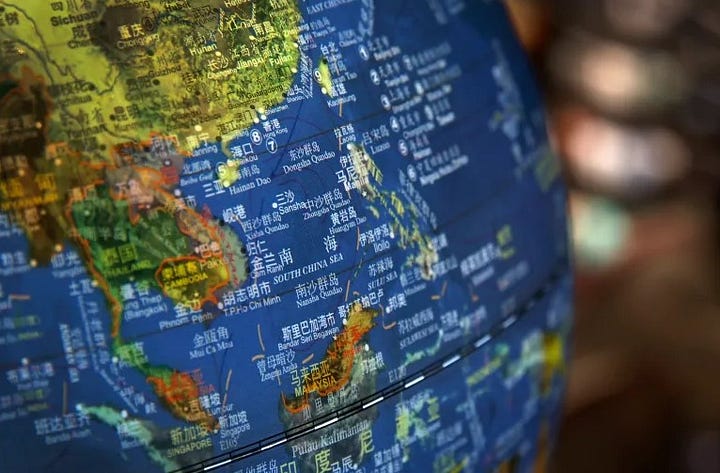 |
| An international court says China’s nine dash line was superseded by the UN Convention on the Law of the Sea [File: Andy Wong/AP Photo] |
Malaysia Rejects China’s New Map Asserting South China Sea Claims
The latest edition of China’s “standard map,” which encompasses a substantial portion of the South China Sea, including areas along the coast of Malaysian Borneo, has been rebuffed by Malaysia. Tensions have escalated in this strategically crucial region as China persistently asserts its dominance, despite a 2016 international court ruling that invalidated its “nine-dash line” and upheld the 1982 United Nations Convention on the Law of the Sea (UNCLOS).
China’s increasing assertiveness has manifested in the construction of military installations on rocky formations and the deployment of its coast guard and maritime militia. These actions have led to encounters with other claimants, such as Malaysia, the Philippines, Vietnam, Brunei, and Taiwan. The recent map explicitly depicting the nine-dash line raised concerns, as it clashes with Malaysia’s claims over its Sabah and Sarawak regions.
In response, Malaysia declared that it does not acknowledge China’s claims within the South China Sea as delineated in the “2023 edition of the standard map of China,” emphasizing that the map holds no legal weight. This intricate territorial dispute also involves India, which strongly protested China’s map for including the Indian state of Arunachal Pradesh and the Aksai Chin plateau as Chinese territory, a contention that has persisted for decades.
China defended its stance by referring to historical records dating back to the Xia dynasty, nearly four millennia ago, as the basis for the nine-dash line. India expressed its rejection of these claims, calling them baseless and counterproductive to resolving their border issues.
Malaysia highlighted the complexity and sensitivity of South China Sea sovereignty and underscored the need for diplomatic discussions guided by international law, including UNCLOS. The country reiterated its commitment to negotiating a substantial code of conduct for the South China Sea, aiming for an efficient and meaningful resolution.
Amid these developments, Malaysia vowed to continue its oil and gas exploration off Borneo despite Chinese warnings. In 2021, Malaysia protested the presence of Chinese vessels in its exclusive economic zone (EEZ) off Borneo by summoning the Chinese ambassador.
China’s actions in the South China Sea have also stirred tensions in the Philippines. Instances of conflict near Second Thomas Shoal, also known as Ayungin Shoal, have been reported. The Philippines confronted China after the Chinese coast guard used a water cannon on a ship attempting to resupply Filipino sailors. Similarly, in February, the Philippines accused China of aiming a “military-grade laser” at its vessels. China previously acquired control over Scarborough Shoal from the Philippines after a prolonged standoff in 2012 and took possession of Mischief Reef in 1995, in addition to seizing the Paracel Islands from Vietnam in 1974.